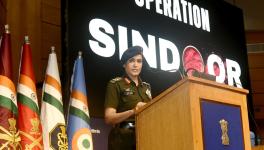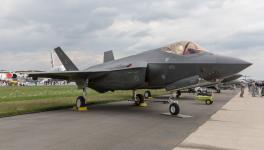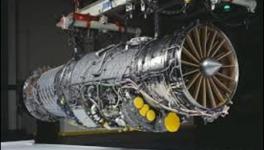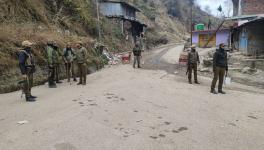India’s Combat Helicopter: Re-discovering Self-reliance?
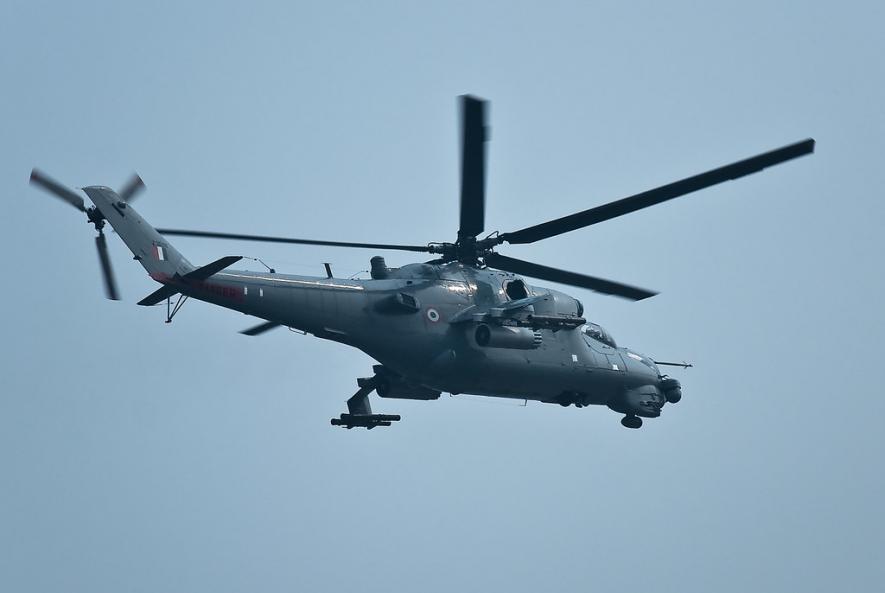
Image Courtesy: Flickr
On October 3, 2022, Hindustan Aeronautics Ltd (HAL)'s indigenously designed and produced Light Combat Helicopter (LCH) was formally inducted into the Indian Air Force in Jodhpur in the presence of the Defence Minister, who named the aircraft Prachanda (fearless). “The induction of LCH underlines the fact that just as the country trusts the Indian Air Force, the IAF equally trusts the indigenous equipment,” the Minister said.
An unspoken question lurks there: Is this Government now gradually coming to trust indigenous defence hardware and the public-sector research institutions and industries (PSUs) which develop and manufacture them? The question assumes importance because, certainly in the recent past and often even these days, the government has held a highly disparaging view of PSUs, has aggressively pushed privatisation as a panacea, and assiduously wooed FDI as the preferred means of bringing in new technologies. We will return to this discussion later, but let us first look at the LCH and what we can learn about the path to self-reliance from this project.
THE HELICOPTER
India’s first indigenous combat helicopter, with the prefix “light” being significant in several ways, has taken a long time coming but is a welcome addition for both the Army and the Air Force, both ordering substantial numbers, expected to be 65 for the IAF and 114 for the Army. The current order of 15 limited series production variants (10 for the IAF and 5 for the Army) is at Rs 3,887 crores (about Rs 260 crore each) with a further Rs 377 crores for infrastructure. HAL's LCH assembly line is now believed to be capable of producing 30 helicopters a year.
India has till now been operating a few armed Advanced Light Helicopters (ALH), the platform on which the LCH is based, but that was a make-shift arrangement, with no comparison to a purpose-built attack helicopter. In addition, both the Army (6) and the IAF (22) are now operating the heavier, better armed and more capable Boeing Apache AH-64E advanced multi-role combat helicopter acquired from the US under the inter-governmental Foreign Military Sales (FMS) arrangement. The 22 IAF Apaches cost Rs14,910 crores ($2.1 billion) or Rs 677 crore each.
These Apaches are deployed across both the Western border and Line of Control (LoC) and the Line of Actual Conference (LAC) to the North, respectively.
The LCH, as the name underlines, is a light and agile machine with a special feature that sets it apart from perhaps any other combat helicopter in the world, namely its ability to operate at extreme altitudes, with an exceptional flight ceiling of 6,000-6,500 metres (19,700 – 21,300 feet). The need for such a helicopter was felt by both the IAF and Army during the Kargil conflict in 1999 when the armed forces were required to attack Pakistani forces entrenched at altitudes around 18,000 feet, virtually preventing efforts by land forces from lower altitudes.
The IAF was then forced to call upon its fighter jets, notably its Mirage 2000s, to launch strikes calling for risky and dangerous manoeuvres, with the then government insisting on rules of engagement ensuring that Indian aircraft would not cross the LoC under any circumstances.
Development of the LCH based on the proven Advanced Light Helicopter (ALH) platform extended over a period of almost two decades from 2004 onwards, about which more later.
The finished product has been through extensive and rigorous trials in the mountains in winter, at minus 18C and altitudes of over 4000 metres (13,200 feet), and in summer conditions in Jodhpur at 39-42C. The LCH has the distinction of having landed at Siachen at altitudes of 13,600 – 15,800 feet.
LCH is a 5.6 tonnes helicopter (compared to around 8 tonnes of the Apache) with two “Shakti” engines, each delivering 1000-1500 kW (1400-2000 hp). These are Turbomeca TM333 turboshaft engines jointly operated by HAL’s Helicopter Division and France’s Safran (a conglomerate of major French engine companies including Turbomeca, Snecma etc.) and named Ardiden-1H1, so as to enable higher flight ceiling and cold weather operations.
DESIGN, AVIONICS
The chopper has a narrow fuselage mostly made of composite materials, some developed by HAL and used in important sub-assemblies in the tail rotor and the main rotor blades, but considerable imported quantities in the fuselage, with flat panels in an angular body as seen in the photograph, and other features which give it a low radar cross-section and stealth capabilities. It is equipped for both day and night operations and fitted with weapons for a ground attack on armour or anti-aircraft equipment (with the Helina, the helicopter-borne variant of the Nag anti-tank missile), air-to-air combat (French MBDA missile) etc.
It has several protection features such as its tricycle landing gear, self-sealing fuel tanks, armour protection, digital camouflage system and infra-red suppressors fitted to the engine’s exhaust to dampen the heat signature against detection and targeting. The specially designed hinge-less rotor is said by pilots to contribute to high agility due to virtually immediate response to flight control commands with little or no time lag.
The LCH has a glass cockpit with an Integrated Avionics Display System (IADS) and multi-function displays along with the onboard target acquisition and designation system (TADS) and a helmet-mounted sight, meaning the chopper’s weapons are automatically directed to the target which the pilot’s head turns to and looks at.
The LCH is protected by an Electronic Warfare Suite (EWS), including receivers for radar warning and laser warning, which alert the pilot to radar waves or lasers used by adversaries to track or attack the chopper, and a missile approach warning receiver, the EWS being provided by the South Africa division of Sweden’s Saab Group. The LCH is also equipped for operational networking with both air/space-based and ground-based elements through an integrated data link for coordination and/or force multiplication. The onboard sensor suite comprising infra-red imaging, laser rangefinder, laser designator and camera enables targeting under all weather and day-night conditions and is provided by the Israeli COMPASS and produced domestically by PSU Bharat Electronics Limited (BEL).
The subsequent series production variants are expected to have HAL-designed Integrated Architecture Display Systems, Automatic Flight Control Systems made in collaboration with private sector industries, and an indigenous radar.
DEVELOPMENT AND SELF-RELIANCE
As noted earlier, the LCH has been under development since 2004 when HAL and the Armed Forces started conceptualisation and decided to reduce foreign acquisitions in favour of indigenous development, which started in earnest in 2006. Undoubtedly, considerable confidence must have stemmed from HAL's Advanced Light Helicopter (ALH) Dhruv, the platform on which the LCH was to be based, has entered into service in 2002 and several versions, including an armed version with the Army and Air Force and Navy by 2007.
The ALH itself had been long under development since 1984 when the Government contract was awarded, but had a chequered development trajectory, with major interruptions due to the financial crisis in 1991 and the US sanctions after the Pokhran-II nuclear tests in 1998.
HAL signed a design-development consultancy contract with Messerschmitt-Bolkow-Blohm in 1984, and the first prototype flew in 1992. The US-made engine was embargoed after 1998, one of many US technology embargoes in aviation, showing the perils of external dependence on crucial technologies, which was a blessing in disguise. HAL then turned to Turbomeca for its TM333 engine, having already been licensed manufacturing the Alouette III, renamed Chetak, by France's Sud Aviation (later merged into the giant Aerospatiale) with the Turbomeca Artouste turboshaft engine.
Turbomeca also agreed to update the TM333 engine for the LCH and also helped with the helicopter development. HAL also utilised the opportunity to absorb rotary wing technology and went from the Chetak-Cheetah to the ALH and then the LCH.
However, it has been reported that the LCH currently is only 45% in cost terms, slated to go up to 55% soon. This is roughly the order of magnitude of indigenousness in most India-made airborne weapons platforms.
There is still much left to be achieved in terms of self-reliance, and most gap areas pertain to critical technologies with application across weapons systems and also in civilian aircraft and other vehicles. Aircraft engines are foremost, but developing one’s own engines is a very tough and expensive task, with even China having reportedly achieved it only recently. This will call for considerable investment in R&D and sustained support and patience over many years.
One wonders what has happened to the Rs 7,000 crore in offsets from the Rafale deal which French engine-maker Safran was to spend in India. Specialised materials, avionics, control systems, advanced military-grade sensors, and radars are other crucial areas which India has not invested sufficiently and needs mission-mode projects for.
HAL’s Rotary Wing Research & Design Centre has now built considerable indigenous capability in helicopter design. Its next venture, a Multi-role Helicopter, on the drawing board for over a decade as a collaborative venture with a foreign partner, is in the planning stage as a medium-life 12-tonne helicopter set to replace the Russian Mi-17 fleet.
Currently, however, there is continued uncertainty since the project is expected to be a "strategic partnership,” that is, a 51:49 joint venture with a private sector entity as per the government's new Defence Procurement Policy (2020) after receiving the minimum order confirmation from the Armed Forces. This is not an organic development arising from the needs and preferences of the main stakeholders but one forced upon them by government ideology to kick-start a private defence industry regardless of capability.
Other institutional problems stand in the way of self-reliance, but space prevents further discussion in this article.
MUTUAL CONFIDENCE
Although the government has of late been singing the praises of atma nirbharta in the LCH made by HAL or the Vikrant aircraft carrier, these projects had acquired significant momentum even before the present government took office. On the other hand, this government has itself been contemptuous and disparaging of Defence PSU over many years, even ideologically opposed to them, openly expressing a preference for a private sector defence industry.
Readers will recall the numerous highly scornful comments about HAL during the controversial Rafale deal, blaming its poor performance, poor quality and high costs for the government cancelling the earlier deal for 126 Rafale fighters, with 108 to be made by HAL.
Many commentators, including in these columns, had pointed to the many aircraft successfully produced by HAL with foreign partners or by itself, the same aircraft now underlined by the government in praising the Atma Nirbharta displayed by HAL! During the Rafale controversy, this same government had crudely overruled all objections and insisted that HAL was unreliable for a high-tech project like the Rafale. Is this not the same HAL that has now indigenously developed the LCH, and is undertaking large orders for the ALH, LCH, Tejas LCA and other platforms?
The government needs to understand what true self-reliance means.
The author is with the Delhi Science Forum and All India Peoples Science Network. His views are personal.
Get the latest reports & analysis with people's perspective on Protests, movements & deep analytical videos, discussions of the current affairs in your Telegram app. Subscribe to NewsClick's Telegram channel & get Real-Time updates on stories, as they get published on our website.












